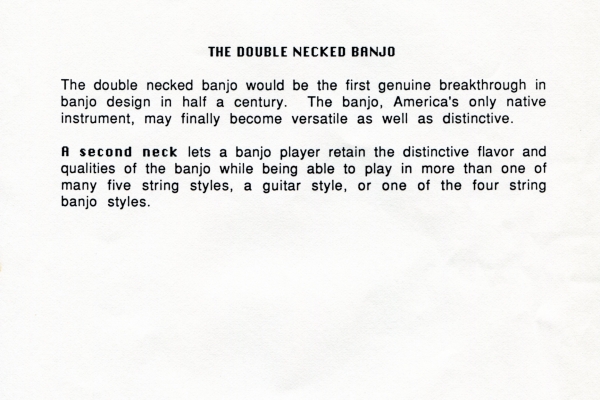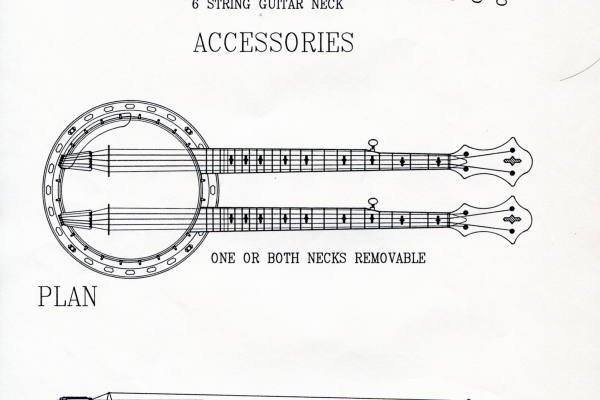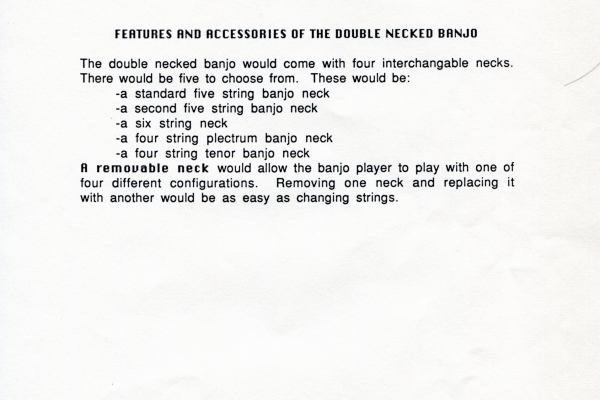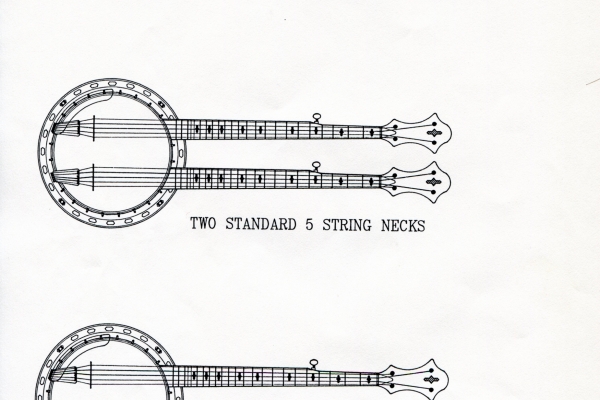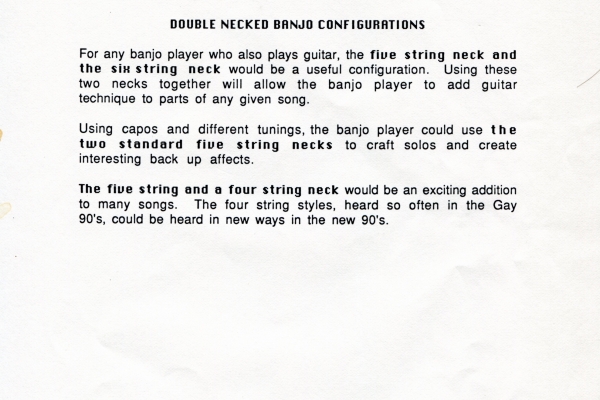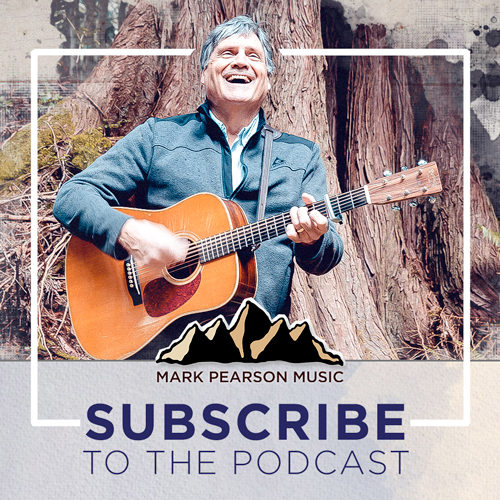A Banjo...with two necks!
The double-necked banjo seemed like a good idea in the spring of 1989. There are a lot different tunings for the five-string banjo. I felt that if you could go from one tuning to another in the middle of a song or make the change when the song goes from the verse to the chorus that it could add a lot of texture and variety. If one of the necks was a four-string neck you could go to whole new style of playing almost instantly. The same would true if one were a six-string neck.
With that in mind I set up a meeting with The Gibson Company when I visited Nashville in March of 1989. An architect friend, Gene Gudger, created the drawings. I met a representative at the Gibson Company offices. He talked about possibly making a prototype. His biggest question was how much a double-necked banjo might weight. When I followed up a week later the company told me they decided not to do it. Not long after that I decided it was a nice idea but not a great one.
The Brothers Four use two banjos in a concert, a four-string and a five-string. Throughout our show we share the American Folk Songbook and demonstrate a lot of banjo styles including ragtime, bluegrass, folk, and old time. People appear intrigued by
For about twenty years I have played Deering banjos exclusively. They own the Vega brand as well. For the last few years I’ve played a Vega Vox IV four-string plectrum banjo along with a Deering Tenbrooks five-string.
A master at playing all the styles on one banjo is Doug Mattocks. I still don’t know quite how he does it as well as he does but you should check out his website. He’s amazing. Here is his website. http://www.dougmattocks.com/


